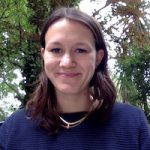Wildfire frequency and intensity is in turn increasing the wildfire exposure of embers, radiative heat and flames on the built environment. Residential areas adjacent to or intermixed with the wildlands, referred to as the wildland-urban interface (WUI), face high risk and regularly experience devastating losses; recent tragic Southern European WUI fire examples include the 2017 Pedrógão Grande Fire Complex in Portugal and 2018 Attica wildfires in Greece. Successfully preventing building ignitions by improving building fire resistance, can eliminate WUI disasters despite increasing wildfire exposures. Embers are often cited as the leading cause of wildfire building damage and destruction; however, detailed understanding of ember accumulation and ignition dynamics and accurate simulations of ember exposure need further development. This project investigates Southern European WUI building damage due to wildfire, with the objective of providing practical recommendations to increase buildings’ resilience. By defining the most significant Southern European building construction components and wildfire exposures, relevant mitigation strategies are tested computationally and experimentally. This research focuses on common local WUI building construction materials and assemblies, ember accumulation and ignition, and building ignition mitigation methods.
Simona is based at Imperial College London, supervised Prof. Guillermo Rein; the research is part of the PyroLife ITN project funded by the European Union Horizon2020 project and collaborates with ITB Poland and NFPA.

Figure: Diagram of wildfire threat approaching WUI home with labelled vulnerable building components, Simona Dossi 2021







